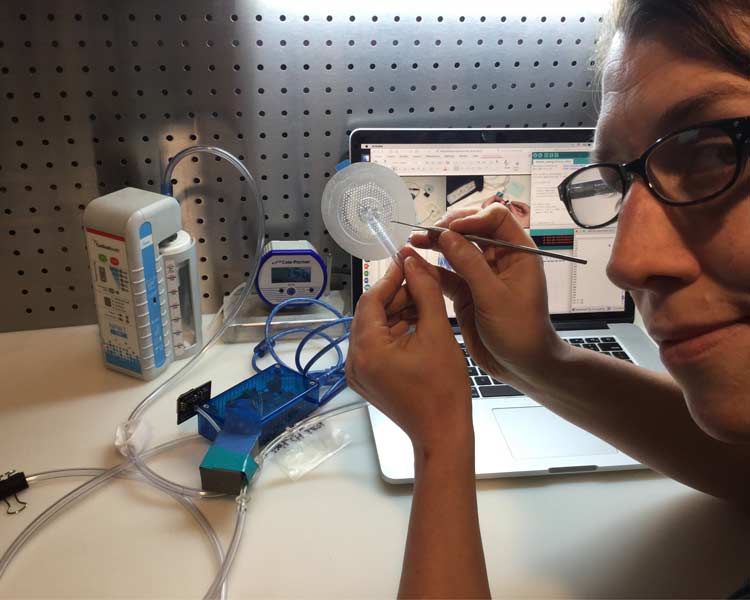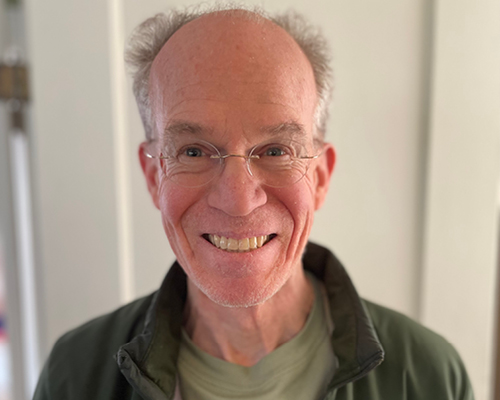WE-REACH Helps Fund Game-Changing Hand Injury Treatment, ReHeal.

It’s a wonder how much you depend on your hands and fingers to navigate daily life. Whether it’s dialing a number on your phone or grabbing your car keys, your hands and fingers orchestrate complicated movements to perform the job you expect them to do. Now imagine one day, in a brief moment of distraction, you’re caught off guard and injure your hand badly enough to end up in the emergency room. If the injury is serious, it could result in permanently impaired function. You may no longer be able to dial that phone or grab those keys without wincing in pain.
These types of hand and finger injuries provided the impetus for three individual innovators to connect, collaborate, and investigate over the past 10 years. The result is a promising prototype device called the ReHeal Glove, which will be pilot tested with patients in the next few months using a combination of funding and support from WE-REACH (the Washington Entrepreneurial Research, Evaluation, and Commercialization Hub) and the Department of Defense.

The ReHeal team’s story illustrates the happenstance that is often part of the entrepreneurial process. Sparked by frustration with standard approaches to post-surgical wound treatment, a UW Medicine researcher and hand surgeon, developed an interest in better hand healing. This amounts to wrapping and immobilizing the hand, which leads to downstream wound healing problems. First, the wraps are not transparent, so inspecting the state of healing requires unwrapping, then rewrapping, which risks disrupting fragile new tissue. Second, when the hand or fingers are immobilized during the healing process, which often results in permanent impaired mobility. These problems spurred Dr. Allan to explore the possibilities of regenerative medicine. He wanted to understand why amphibians can regrow limbs after injury, yet human limb regeneration is unheard of… at least almost.
“Based on a few reports in the literature we knew fingertips can regenerate somewhat, especially in kids,” Allan noted. “That was why we thought the digit was a place to start to see if we could show limb regeneration through regenerative medicine approaches.”
Allan successfully secured funding to explore the possibilities through a Defense Advanced Research Projects Agency (DARPA) grant. This U.S. agency funds ideas for transformative change rather than incremental improvements, which seemed the perfect place for a compelling project like Allan’s.
Meanwhile, DARPA introduced Dr. Allan to Professor Muthu Wijesundara, PhD, Division Head of Biomedical Device Technology at UTARI (the University of Texas at Arlington Research Institute), another DARPA-funded researcher working on wound healing for the face. The Wijesundara team’s concept was a “biomask” that used negative pressure wound therapy to draw fluid out of the wound area, helping it heal faster and lowering the risk of infection, while at the same time delivering fresh liquid to the wound to enhance the healing environment.
After comparing notes, the two researchers teamed up and developed an approach to treat hand wounds that would employ negative pressure wound therapy in a glove format. Enter Brandon Bowman, who met Allan when he came in as a patient with a hand wound. Bowman, who is adept with 3D printing technologies and knowledgeable about product development, joined the team to help with prototyping.
Over the past several years, the team has stuck together to advance their project with support from different sources, working at both the UW and UTARI sites. They were able to carry out a compelling pilot clinical study on five patients with damaged fingers, which led to impressive results with five out of five digits healing over bare bone. This provided significant impetus for the team to continue their efforts. They have patents on the basic application of the technology and others in the works.
WE-REACH funding and support has been crucial. The team’s Department of Defense funding covers the basic clinical study, which will be carried out on 10 patients with the aim of gathering data for evidence of product efficacy and safety. But, at the last minute, they were also required to add 2 control patients even though they were not provided additional funding for the necessary study modifications. Fortunately, WE-REACH funds can be applied to a wide array of costs including the use of expert consultants and outside contractors. The team was able to work with contractors at UW’s Institute of Translational Health Sciences (ITHS) for regulatory and clinical study support using WE-REACH funds to keep study plans on track. If this funding were not available, the whole project would be stalled.
The ReHeal study is proceeding under the Early Feasibility Study (EFS) process with FDA oversight, which means every small change needs to be reviewed and accepted before it can proceed. The team has made good use of their time during review delays by simultaneously participating in the virtual CDL Accelerator in Vancouver, Canada, where they are working closely with a team of industry advisors who have been pushing the ReHeal team through a fast-paced commercialization readiness process. One key pivot suggested by the CDL advisors has been to focus first on the simplest product format, which is a single digit sleeve rather than a whole hand glove, and then advance commercial efforts for the simpler format before tackling more difficult full-hand geometry. It turns out that the market size for the single digit sleeve is substantial, too, since finger injuries are quite common.
“The market analysis WE-REACH funded was very helpful,” said Wijesundara. “Other funders like the DoD do not provide that type of support.”
The “Voice of the Customer” interviews the team gathered through a supporting program brought good insight from independent sources and led to new ideas for markets that the team had not previously considered.
If all goes well, the ReHeal glove will be ready in the near future for people who come into the emergency room with hand injuries. We expect those patients to recover more quickly and regain function more completely. To be sure, we can count on this persistent team to continue on their mission to deliver a better solution for the thousands of patients suffering from these injuries each year.
WE-REACH is one of the NIH Research Evaluation and Commercialization Hubs (REACH) and is supported by NIH Grant U01HL152401.